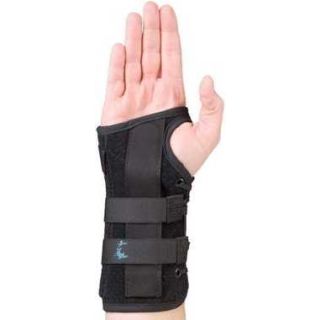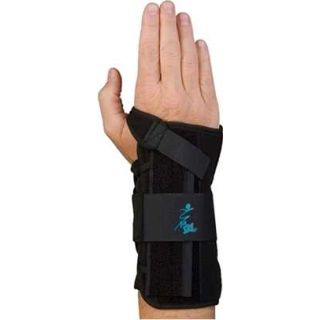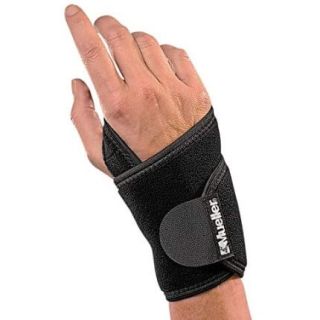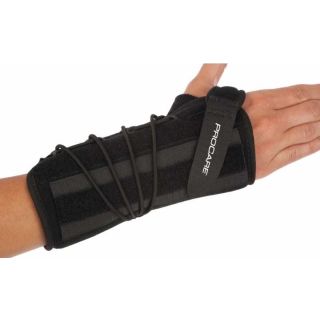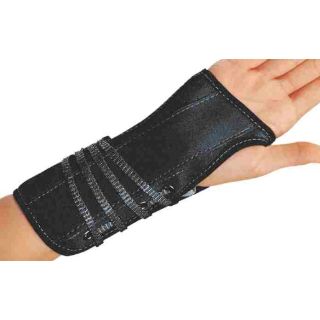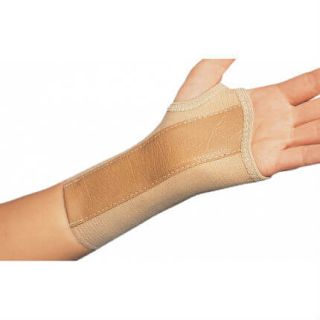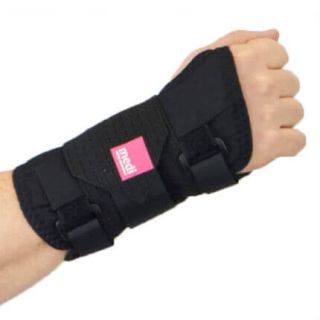The Comprehensive Guide to Wrist Braces for Sprained Wrists
A sprained wrist can be a common yet painful injury, often resulting from sudden twists, falls, or repetitive stress on the wrist joint. Whether you're an athlete, an active individual, or someone recovering from a recent injury, finding the right wrist brace is crucial to support the healing process and prevent further damage. In this comprehensive guide, we will explore the various aspects of wrist braces for sprains, including their importance, types, proper usage, and considerations for selecting the most effective sprained wrist brace.
Understanding Wrist Sprains
Before delving into wrist braces, it's essential to understand what happens during a wrist sprain. Unlike with an injury such as carpal tunnel syndrome, a sprain occurs when the ligaments that connect the bones in the wrist are stretched or torn. This can lead to pain, swelling, and limited range of motion. Wrist sprains are often classified into grades based on the severity of the injury, ranging from mild (Grade I) to severe (Grade III). Regardless of the grade, appropriate care and support, including the use of a wrist brace, are vital for a speedy and successful recovery.
The Role of Wrist Braces in Recovery
Wrist braces are instrumental in the recovery process for individuals dealing with a sprained wrist. They offer several key benefits:
Immobilization and Stability:
Wrist braces provide a level of immobilization, preventing excessive hand and wrist movement that can exacerbate the injury. This stability is crucial in the initial stages of recovery when minimizing strain on the affected ligaments is paramount.
Compression and Swelling Reduction:
Many wrist braces are designed to provide compression, which helps reduce swelling and inflammation. By compressing the injured area, braces promote better circulation and facilitate the body's natural healing processes.
Pain Relief:
Wrist braces can alleviate pain by supporting the wrist joint and reducing the load on injured ligaments. This allows individuals to engage in daily activities with less discomfort while promoting a more comfortable healing environment.
Facilitation of Proper Healing:
By maintaining the wrist in a proper position, braces contribute to the natural healing of ligaments. This helps prevent complications such as chronic instability and ensures a more robust recovery.
Types of Wrist Braces for Sprains
Several types of wrist and hand braces cater to different needs, preferences, and stages of recovery. The four main categories include:
Basic Elastic Wrist Braces:
Suitable for mild sprains and as a preventive measure during activities that may strain the wrist.
Typically made of elastic materials that offer moderate compression and support.
Rigid or Splint Wrist Braces:
Ideal for moderate to severe sprains that require more significant immobilization.
Feature rigid supports or splints on the top and bottom of the wrist to limit movement and provide stability.
Adjustable Wrist Braces with Straps:
Designed for customizable support and compression.
Feature adjustable straps that allow users to control the level of tightness and support based on their comfort and the specific needs of their injury.
Thumb Spica Wrist Braces:
Specifically designed to immobilize the thumb and wrist.
Commonly used for sprains that involve both the wrist and thumb ligaments.
Proper Usage and Care of Wrist Braces
To maximize the effectiveness of a wrist brace for a sprained wrist, it's essential to use it correctly and follow proper care guidelines:
Correct Fit:
Ensure that the wrist brace fits snugly but not too tight. A proper fit prevents discomfort and allows for effective support.
Positioning:
Position the brace according to the specific instructions provided by healthcare professionals or the product manufacturer. The proper positioning ensures that the injured area receives adequate support.
Consistent Wear:
Wear the wrist brace consistently, especially during activities that may strain the wrist. Consistent use promotes stability and accelerates the healing process.
Adjustability:
If using an adjustable brace, periodically check and readjust the straps to maintain the desired level of support. This is particularly important as swelling reduces or increases.
Skin Care:
Keep the skin under the brace clean and dry. Moisture can lead to skin irritation or infections. If the brace is removable, follow the care instructions provided by the manufacturer.
Consultation with Healthcare Professionals:
If there are concerns about the fit, usage, or progress of recovery, consult with a healthcare professional or orthopedic specialist. They can provide guidance and adjustments to the treatment plan as needed.
Considerations for Selecting a Wrist Brace for a Sprain
When choosing a wrist brace for a sprained wrist, consider the following factors to ensure the brace aligns with your specific needs and preferences:
Type and Severity of Sprain:
The type and severity of the sprain influence the choice of a wrist brace. Mild sprains may require less rigid support, while severe sprains may benefit from braces with splints or rigid supports.
Activity Level:
Consider your usual activity level and whether you need a brace for daily activities, sports, or work. Some braces are designed for specific activities, providing the necessary support without hindering performance.
Comfort and Breathability:
Look for braces made from breathable materials that provide comfort during extended wear. Adjustable straps and padding can enhance overall comfort.
Ease of Application:
Choose a wrist brace that is easy to put on and take off, especially if you anticipate frequent removal for tasks like washing or applying topical treatments.
Durability:
Assess the durability of the brace, particularly if you plan to use it for an extended period. High-quality materials and construction contribute to the longevity of the brace.
Brand Reputation and Reviews:
Research reputable brands known for their quality wrist braces. Reading reviews from individuals with similar injuries can offer insights into the effectiveness and durability of specific braces.
Consultation with a Healthcare Professional:
If unsure about the most suitable wrist brace for your specific situation, seek advice from a healthcare professional or orthopedic specialist. They can provide personalized recommendations based on the nature of your injury.
A sprained wrist can be a challenging setback, but with the right support and care, a full recovery is within reach. Wrist braces for sprains play a pivotal role in this process, offering stability, compression, and pain relief to facilitate healing. By understanding the types of wrist braces available, proper usage guidelines, and key considerations for selection, individuals can make informed choices tailored to their unique needs. Whether you opt for a basic elastic brace, a rigid splint design, an adjustable model, or a thumb spica brace, the goal is to provide the necessary support for a comfortable and effective recovery journey. Always prioritize your health and well-being, and consult with healthcare professionals for personalized advice on your path to healing.
 Details$24.99 $15.99
Details$24.99 $15.99 Details$28.99 $24.99
Details$28.99 $24.99 Details$27.99 $20.99
Details$27.99 $20.99 Details$56.99 $49.99
Details$56.99 $49.99 Details$12.99 $9.25
Details$12.99 $9.25 Details$24.99 $16.99
Details$24.99 $16.99 Details$36.99 $27.99
Details$36.99 $27.99 Details$39.99 $30.99
Details$39.99 $30.99 Details$40.99 $32.49
Details$40.99 $32.49 Details$28.99 $19.99
Details$28.99 $19.99 Details$34.99 $24.99
Details$34.99 $24.99 Details$40.00 $40.00
Details$40.00 $40.00

